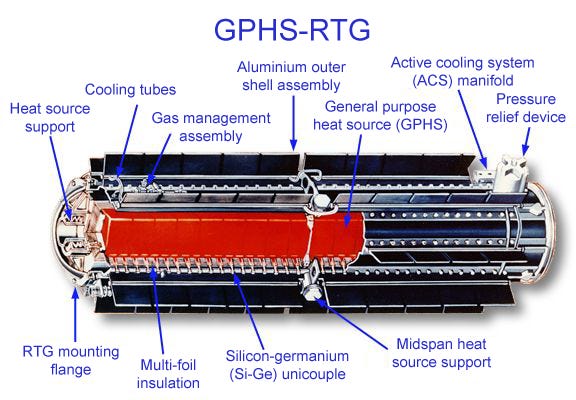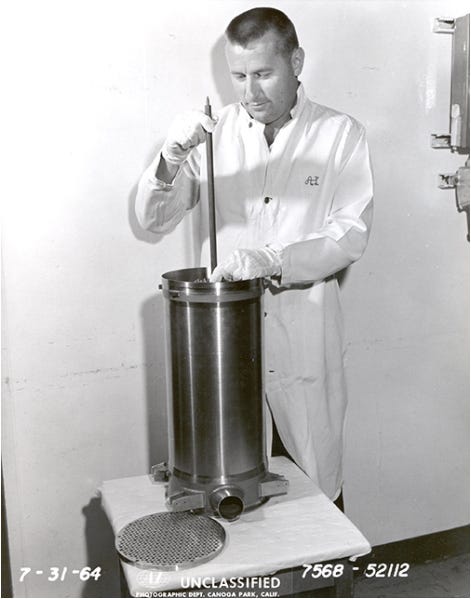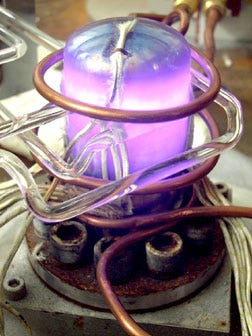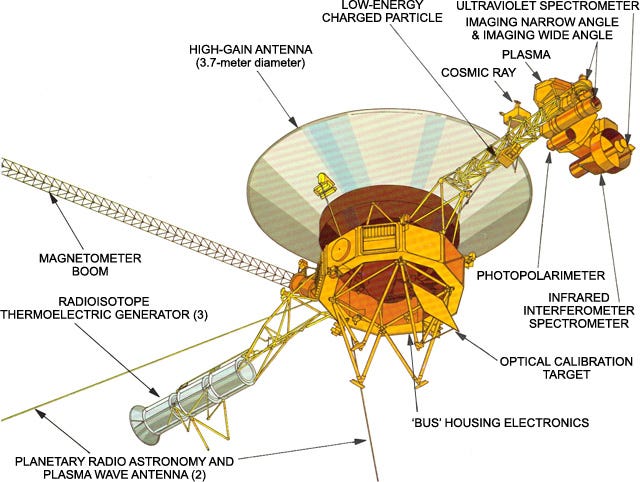The Quiet Workhorses of Deep Space: Nuclear Batteries
The Quiet Workhorses of Deep Space (and beyond)
Imagine a power source that hums without moving parts, shrugs at dust storms, keeps working in the dark, and measures its life in decades. That’s a nuclear battery. Not a reactor, not a bomb—just a compact source of steady heat from a decaying radioisotope, turned into electricity with elegant simplicity. In places where sunlight dies and maintenance is a fantasy—Pluto’s night, Titan’s winter, the abyss between stars—nuclear batteries are how we keep the lights on.
Below is the full tour: what they are, how they’re built, who’s flown them, why they’re hard, and where the field is headed—written in cool-arjit mode: crisp, curious, and a little bit nerd-hype.
What we mean by “nuclear battery”?
Two big families:
Radioisotope heat–based generators (RPS/RTG/RHU): Use the decay heat of a radioisotope—traditionally plutonium-238—and convert the heat to electricity. Classic RTGs use thermoelectrics (Seebeck effect); newer concepts add thermophotovoltaics or Stirling convertors for higher efficiency. RHUs are the tiny non-electric cousins that supply heat only (≈1 W of heat per unit) to keep spacecraft warm.
Direct-conversion “nuclear batteries” (betavoltaics/alphavoltaics): Radioactive particles (usually betas) generate electron–hole pairs in a semiconductor junction—think solar cell, but the “sun” is a beta source. Power is ultra-low but can last for decades, perfect for trickle power in embedded sensors or medical implants.
The short history (with long half-lives)
1961 — First in space. The U.S. Navy’s SNAP-3 RTG rode on Transit 4A, delivering a few watts to an early navigation satellite. That moment proved the idea works above the atmosphere.
The Apollo era put SNAP-27 RTGs on the Moon (ALSEP packages), and the 1970s Pioneer/Voyager craft turned RTGs into deep-space passports.
Workhorses of the outer planets. Galileo (Jupiter), Ulysses (solar poles), Cassini–Huygens (Saturn/Titan) all depended on radioisotope power/heat. Today, Voyager 1 & 2 are still alive at the edge of interstellar space, eking out watts from aging generators; New Horizons continues past the Kuiper Belt. NASA keeps a public mission ledger if you want to time-travel through the whole lineup.
Inside the box: design & working principles
Fuel: why Pu-238?
Plutonium-238 is the gold standard: half-life ~87.7 years and decay heat ≈0.57 W/g—lots of reliable heat with mainly alpha radiation (easy to shield). Pack the oxide into rugged GPHS (General-Purpose Heat Source) modules with multilayered iridium cladding and graphite aeroshells; design for worst-case launch accidents is non-negotiable.
Converters: turning gentle heat into stubborn watts
Thermoelectric RTGs (MMRTG/GPHS-RTG/MHW-RTG). Solid-state, no moving parts. Hot junction faces the fuel; cold junction faces space (or a sink). Efficiency is single-digits, but reliability is king. NASA’s modern MMRTG starts near ~110–125 W(e) and gently declines each year as the isotope cools and the thermoelectric couples age.
Dynamic RPS (Stirling). A free-piston Stirling convertor uses the heat to move a working gas and an alternator—>25–30% conversion demonstrated in lab units, roughly 3–4× the electrical output per kilogram of Pu-238 versus thermoelectrics. None have flown yet (programs were paused/re-scoped), but NASA/DOE continue tech maturation toward flightable Dynamic RPS.
Thermophotovoltaic (TPV) concepts. Heat a tailored emitter so it radiates in a band PV cells love, then harvest photons with spectral filters. Attractive on paper for higher efficiency and specific power; still in development.
Heaters only: RHUs
Radioisotope Heater Units are thimble-sized Pu-238 pellets that give ≈1 W of heat each—no electricity, just survivability through frigid nights (Mars) or deep cold (Saturn/Titan). Missions often fly dozens to over a hundred RHUs.
Notable space missions (and what the battery made possible)
Voyager 1 & 2 (1977–present): Multi-Hundred-Watt RTGs let them tour four giant planets and keep going. NASA lists current power around the ~225 W(e) level for the spacecraft as of 2023–2024 management updates—astonishing longevity.
Cassini–Huygens (1997–2017): Three GPHS-RTGs on the orbiter, 117 RHUs total across orbiter + lander—critical for operations at Saturn where sunlight is weak and winters are long.
New Horizons (2006–): A single GPHS-RTG carried it past Pluto (2015) and on to Arrokoth (2019), continuing the Kuiper Belt recon.
Curiosity (2012–) & Perseverance (2021–): Each carries one MMRTG (~110 W at start of mission), powering mobility, science, and year-round heating through Martian winters and dust storms that cripple solar. Perseverance is the first rover fueled with newly restarted domestic Pu-238 production.
Dragonfly (planned for Titan): Baselines an MMRTG to fly a nuclear-warmed, nuclear-powered quadcopter through Titan’s dense, cold air—launch currently targeted for late 2020s.
NASA keeps a living index of all RPS/RHU missions—worth a scroll if you love timelines.
Current usage on Earth
Scientific stations & beacons (historical): RTG beacons once powered remote lighthouses and Arctic instruments. Most have been retired or replaced for security and stewardship reasons.
Micro-power betavoltaics: Approved, niche devices using tritium (H-3) or Ni-63 now trickle-power ultra-low-drain electronics, especially where battery swaps are impossible. The field has seen regulated products (e.g., City Labs’ tritium units) and renewed materials work to boost power density and radiation tolerance.
“Diamond batteries” (C-14 in diamond): Real physics, real labs—but still very low power and early-stage. Great for unattended sensors, not your phone or EV (despite viral headlines). Treat bold consumer claims with caution until peer-reviewed performance data and shipped products catch up.
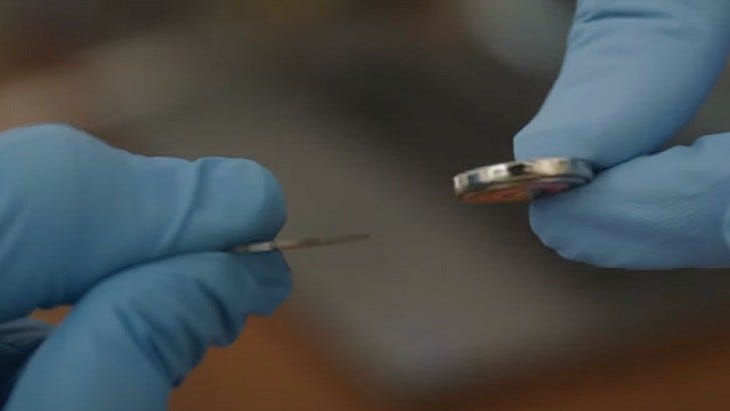
Applications: when a nuclear battery beats everything else
Deep space & high latitudes: Far from the Sun (Jupiter–Kuiper Belt) or in shadowed craters (Moon poles), solar power collapses; nuclear batteries don’t care.
Dust, night, and winter: Mars dust storms, lunar nights (14 Earth days), or Titan’s cold haze—steady heat and watts are survival.
High-reliability, no-touch systems: Where you can’t service or swap batteries—interstellar probes, ocean abyssal sensors, sealed medical implants, nuclear decommissioning monitors—nuclear batteries can be mission-enabling.
The limitations (and why engineers lose sleep)
Pu-238 supply chain: For a decade we coasted on legacy stocks. The U.S. restarted production (ORNL/INL/LANL) and is ramping toward ~1.5 kg/year heat-source oxide to support future missions, with milestone shipments in 2023–2024. Any hiccup throttles missions.
Specific power & efficiency: Thermoelectric RTGs are bulletproof but ~6–7% efficient; that’s a lot of mass and heat radiators for ~100 W(e). Dynamic or TPV systems promise more watts per gram but must clear reliability/safety hurdles.
Safety, licensing, public risk: Launch safety analyses are rigorous; GPHS modules are designed to survive “bad day” scenarios. Still, every nuclear payload faces scrutiny—mitigations add cost and schedule.
Direct-conversion reality check: Betavoltaics produce microwatts to milliwatts—fantastic for sipping devices, not for propulsion, base camps, or consumer electronics.
The near future: smarter watts, new isotopes
Dynamic Radioisotope Power Systems (DRPS): NASA/DOE are flight-qualifying free-piston Stirling convertors with demonstrated ~25–38% efficiency in flight-like hardware. Expect 3–4× better “watts per Pu-238” and meaningful radiator mass savings if/when they fly.
Thermophotovoltaic RPS: Spectrally selective emitters + robust PV could bridge some of the efficiency gap without moving parts—active research, promising trade-space for mid-power missions.
Americium-241 RTGs (Europe/UK): ESA & UK NNL are maturing Am-241 fuel production and encapsulation to create a sovereign European RPS capability. Am-241 has a longer half-life (432 y) but lower specific power than Pu-238; it could unlock steady trickle power for small/medium missions and surface stations without relying on U.S. Pu-238.
Bigger picture: RTGs/Dynamic RPS slot below Kilopower (small fission) and above solar + batteries, creating a ladder of options: milliwatts (betavoltaics) → 100–500 W(e) (RTG/DRPS) → kilowatts (reactors), so mission designers can size power to ambition.
“Cool, but how does this translate to missions?”
Mars sample caching & mobility: MMRTG-class power keeps rovers rolling and arm heaters toasty during the cold-soak—without battery-killing brownouts. (Curiosity, Perseverance)
Ocean worlds & Titan flyers: Dense atmospheres and dim sunshine favor nuclear. (Cassini’s heritage; Dragonfly’s playbook)
Interstellar probes 2.0: The next “Voyagers” almost certainly need Dynamic RPS to stretch scarce Pu-238 and ride for 50+ years.
Lunar nights & polar craters: RHUs or compact DRPS units paired with small landers/sensor stacks to survive 14-day nights or permanent shadow.
Earthside long-watch sensors: Betavoltaics for tamper-proof, maintenance-free nodes in places humans shouldn’t go—radiation zones, sealed industrial equipment, remote environmental monitors.
Solar gives you freedom where light is cheap. Nuclear batteries give you time—stable watts and heat, season after season, orbit after orbit. They’re the reason we have weathered the Martian winter, mapped Saturn’s rings for 13 years, and still hear from emissaries launched when “streaming” meant water.
If we’re serious about permanent polar outposts, Titan flyers, Kuiper Belt scouts, and interstellar pathfinders, then smarter, thriftier nuclear batteries—Dynamic RPS, TPV, and Am-241 options—are the hinge technology that keeps ambition from being throttled by sunlight and servicing.



